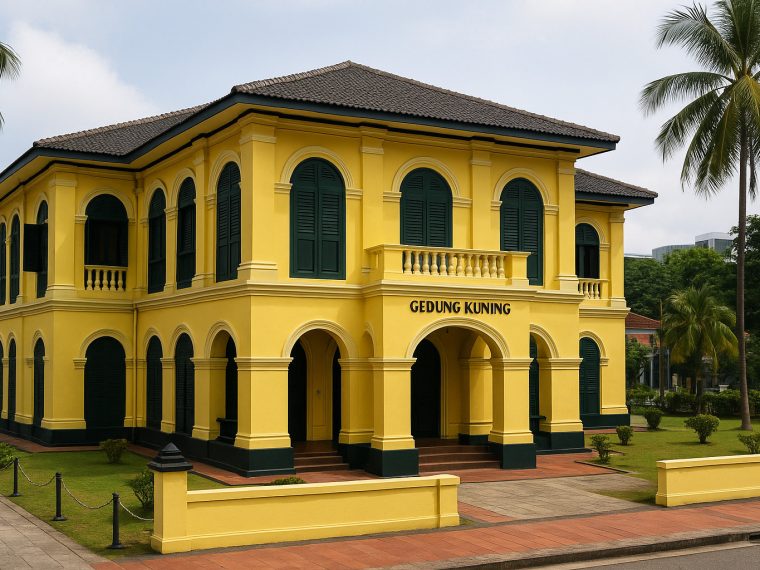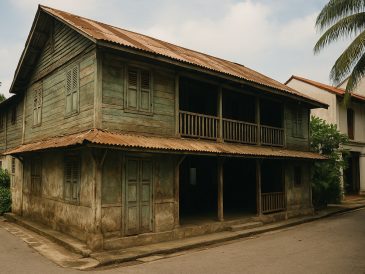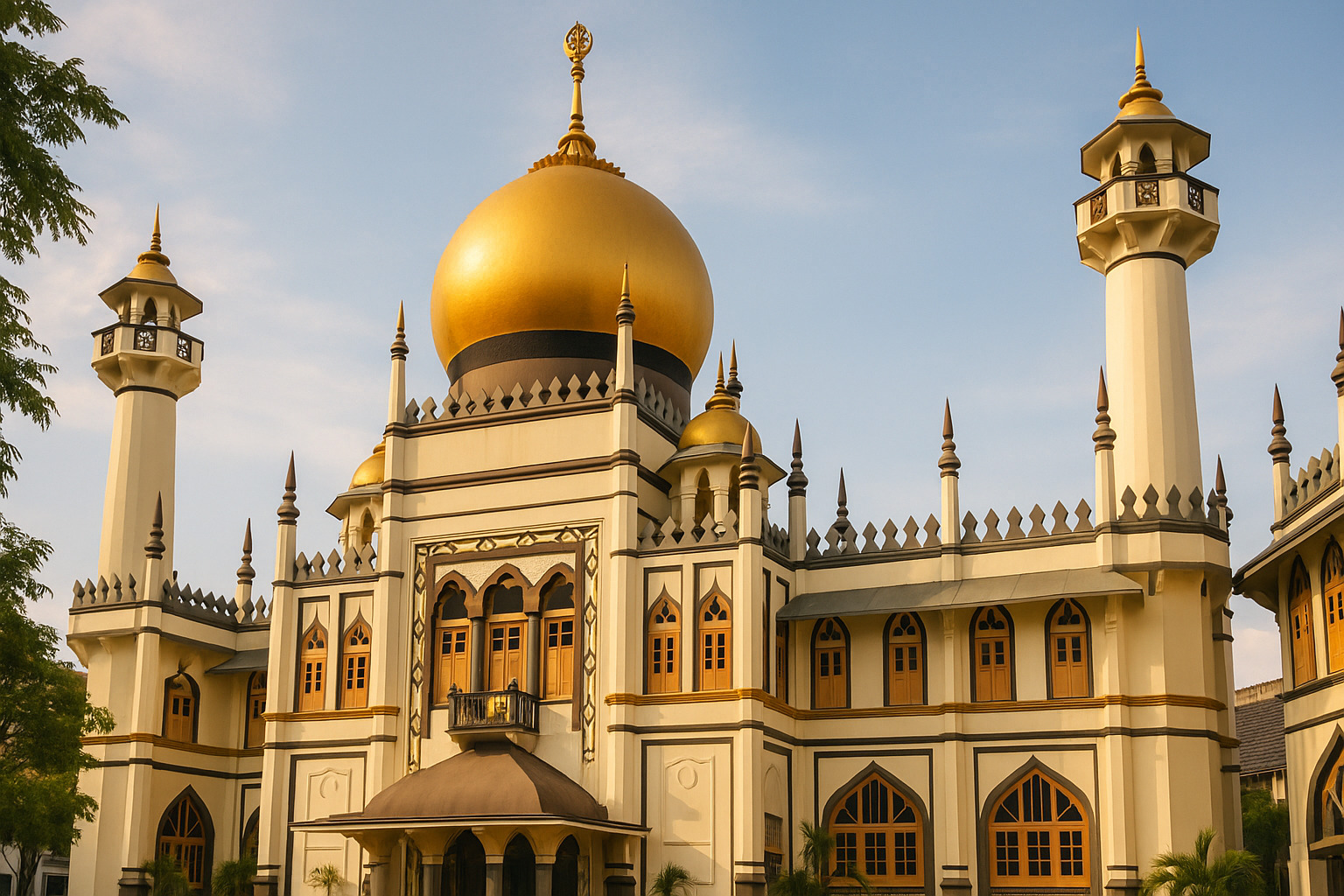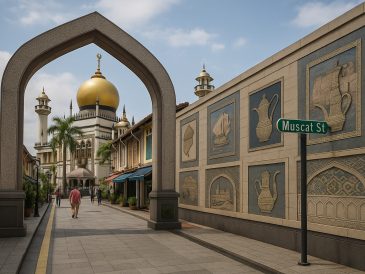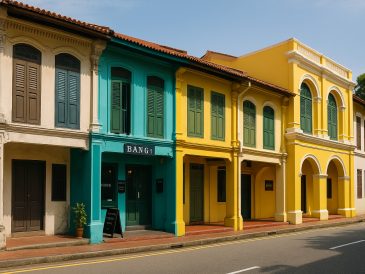Gedung Kuning, or the Yellow Mansion, stands quietly on Sultan Gate with a gaze that stretches across centuries. Built in the 1840s, this grand residence holds stories etched into its sandstone walls, whispers from royal lineage, colonial turbulence, and cultural rebirth. What makes Gedung Kuning more than just a yellow building in Kampong Gelam? Its legacy lies in the way it bridges history, community, and continuity—without theatrics or spectacle.
A Royal Address with Historical Weight
Gedung Kuning was the residence of Tengku Mahmud, a member of the royal family of the Johor Sultanate. It was part of a larger Malay palace complex that included Istana Kampong Gelam. While Istana housed the Sultan, Gedung Kuning served as the home of relatives closely connected to the ruling line. Its architecture reflects a blend of traditional Malay design and European neoclassical influence, a subtle sign of its cosmopolitan surroundings.
Built adjacent to the Sultan Mosque, the mansion’s location alone placed it within the political and spiritual core of Kampong Gelam. It became an address that quietly asserted social rank and family prestige.
The Yellow That Spoke in Codes
The color yellow in Malay culture signifies royalty. This wasn’t a casual paint choice. The entire building was coded in authority and sacredness. Yellow signaled that those who lived within were descendants of nobility. Even as power dynamics shifted through British colonization and post-independence transformations, the building held on to that identity through color alone.
Survival through Changing Times
Gedung Kuning witnessed British colonization, Japanese occupation, and Singapore’s journey to independence. Each shift tested the structure’s purpose.
- During the British colonial era, its significance dimmed as new power structures formed.
- During the Japanese occupation, it was reportedly used by military authorities.
- In post-independence Singapore, its use transitioned from private residence to government-acquired property.
The building was gazetted for conservation in 1999. By then, the government had begun rehabilitating Kampong Gelam to preserve its heritage, and Gedung Kuning found itself back in public view.
A Residence Becomes a Restaurant
One of the most defining chapters in its modern history came in the 2000s, when Gedung Kuning transformed into a Malay fine-dining restaurant called “Mamanda.” The mansion, with its original wooden staircase and high ceilings, became a setting for curated culinary experiences.
This transition was more than commercial reuse. It reactivated the building’s cultural relevance. Gedung Kuning started playing host to traditional Malay weddings, educational tours, and heritage festivals. Its identity as a living cultural space took shape.
Elements That Continue to Tell the Story
1. Architectural Details
- High windows and open verandas support natural ventilation, suited to the tropical climate.
- Louvered doors and timber fretwork add visual lightness to an otherwise stately home.
- Symmetrical facades with neoclassical columns signal colonial-era influence.
2. Interior Design Choices
- The original flooring has been preserved in sections.
- Wooden balustrades and detailed cornices carry the signature of mid-19th-century Malay aristocracy.
3. Functional Spaces
- The ground floor served social purposes—receiving guests, hosting meals, and community gatherings.
- The upper floor was reserved for family life, prayers, and private reflection.
Why It Matters Beyond Aesthetic
Gedung Kuning isn’t just a remnant of the past. Its continued use today—through exhibitions, guided walks, and cultural events—ensures that it remains relevant. Rather than static preservation, it lives through interaction.
Cultural continuity thrives when heritage spaces are active, not merely admired from behind ropes. Gedung Kuning’s story isn’t trapped in 1840—it’s still writing new chapters.
Legacy Through Modern Relevance
Here’s what Gedung Kuning offers today, not as nostalgia but as active heritage:
- Education: Schools use it as a teaching site for Malay history and architecture.
- Tourism: It stands as one of the key stops in Kampong Gelam heritage trails.
- Events: Traditional ceremonies and food festivals animate its courtyards regularly.
Voices of Kampong Gelam
Local residents often speak of Gedung Kuning with familiarity. It’s not a distant relic. It’s part of the street’s rhythm. Its yellow walls have seen wedding parades, street performances, and festive lights. It is one of the few remaining places in Singapore where royal Malay culture isn’t only archived—it’s practiced.
Visiting Gedung Kuning Today
For those walking through Kampong Gelam:
- Look for the golden-hued facade facing Sultan Gate.
- Notice how its height and structure differ subtly from shophouses nearby.
- Enter to witness exhibitions or dine if it’s open for hospitality events.
- Walk next door to the Malay Heritage Centre to understand the building’s full context.
Cultural Threads That Don’t Break
Gedung Kuning’s story ties into larger themes—land ownership, colonial transformation, multicultural layering, and the reshaping of public memory. It’s about how a house built for one family ends up serving an entire community across centuries.
Singapore often reinvents space quickly. But Gedung Kuning resists the erasure of slower, inherited meaning. Its yellow speaks louder than most neon signs. It doesn’t perform. It remembers.
Gedung Kuning endures not as a monument, but as memory made visible.
